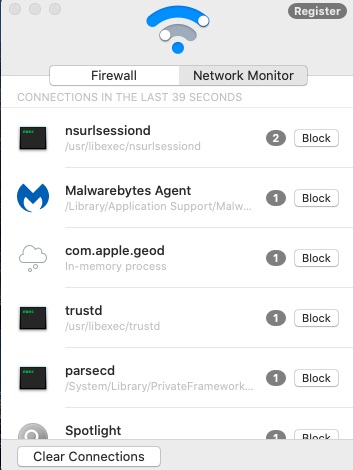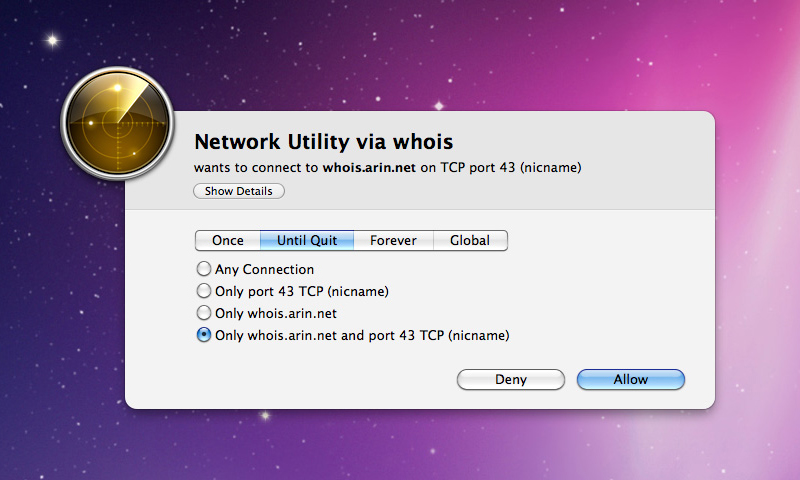

Fixed an issue causing an app’s Internet Access Policy not being shown if that app was running in App Translocation.Fixed a memory leak that occurred when closing a snapshot window in Network Monitor.Fixed Little Snitch Daemon hanging while updating a rule group subscription that contains many rules.Improved performance of rule sorting in Little Snitch Configuration, which leads to better overall performance.Reduced CPU load of Network Monitor while inactive.Reduced CPU load of Little Snitch Daemon during DNS lookups.Improved overall performance for large rule sets.When you contact our tech support, we sometimes ask you to create these reports. Fixed creating Diagnostics Reports for non-admin users (on macOS High Sierra and later).Fixed backup restore from Time Machine not working in Little Snitch Configuration due to the new “Full Disk Access” security mechanism.All changes made in Little Snitch 4.3 or later are not included in the old file, of course.Note that backup files created using File > Create Backup… in Little Snitch Configuration use the old file format and are therefore backward-compatible with previous versions of Little Snitch. This new file format is not compatible with older versions of Little Snitch, though.When updating to Little Snitch 4.3, the old configuration file is left untouched in case you want to downgrade to a previous version of Little Snitch. This version uses a new format with speed and size improvements for the configuration file in which the current rule set and the preferences are stored.
#Little snitch mojave coupon code#
In cases where Little Snitch detects such a modification, it now also better explains the possible underlying cause and the potential consequences.įor more information see the chapter Code identity checks in the online help. This is as straightforward as Auto-Tune has ever been - Antares’ legendary plugin boiled down to just the essentials.

Instead of a “code signature mismatch”, Little Snitch’s connection alert now informs that “the program has been modified”. When editing a rule, Little Snitch Configuration no longer shows a checkbox titled “requires valid code signature” but instead one that is titled “check process identity” (or if the rule is for any process: “apply to trusted processes only”).

This change leads to a different terminology. (There’s still a warning if a process is not signed, but only to inform you about a possible anomaly.) That is usually still the code signature but for programs that are not code signed, Little Snitch now computes a secure hash over the program’s executable. The focus is now on checking for modifications with the best means available.

The focus was therefore on a program’s code signature.īeginning with version 4.3, Little Snitch can always check whether a program has been tampered with, even if it’s not code signed at all. Programs without a code signature could not be validated and Little Snitch warned accordingly. Previous versions required a program to have a valid code signature in order to be able to detect illegitimate modifications later on. How Little Snitch does that changes with this version. To do that, Little Snitch must be able to detect whether a program was modified. This is to prevent malware from hijacking existing rules for legitimate programs. Little Snitch has a security mechanism that ensures rules are only applied to programs for which they were originally created. With Little Snitch for Mac, users can prevent personal information from being sent out, although its.
#Little snitch mojave coupon mac#
Despite fewer malware threats to Mac systems, there is still a need for data protection. Protect your privacy! Little Snitch informs you whenever a program attempts to establish an outgoing Internet connection and hence reliably prevents. Improved detection of program modification This release contains changes in the following areas:


 0 kommentar(er)
0 kommentar(er)
